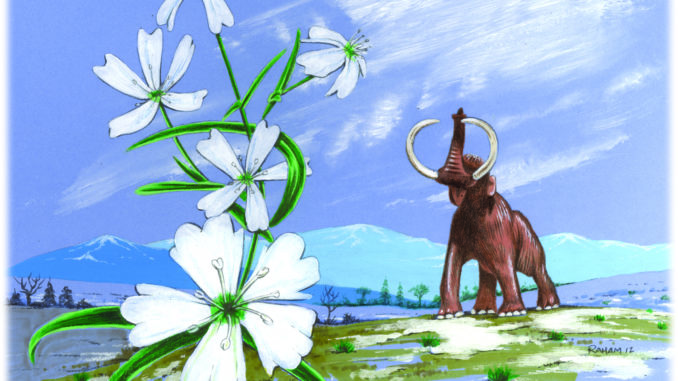
Bio Bites
By R. Gary Raham
Global warming is not hypothetical or mysterious to (most) governments and big business. Both these classes of human endeavor are scrambling to stake claims on the segment of the world currently most impacted: the Arctic. Between 1979 and 2018 nearly one million square miles of ice have disappeared there. Since the 1880s the average surface temperature of the planet has risen 1.80 F (10 C). National Geographic in the September 2019 issue said, “By mid-century if not sooner, Arctic summers are suspected to be hot enough to melt most of the sea ice that forms in winter.” One model suggests it will happen by 2036. This probability offers promise, peril and the threat of lost treasures.
Some things to look forward to:
- Easier access to, and transport of, huge deposits of gas, oil, and minerals
- Potential for an expanded fishing industry
- Additional ice-free real estate for growth and development
- Expanded tourism
Increased dangers
- Melting permafrost will release more carbon into the atmosphere. Much more. The atmosphere now holds 870 gigatons of carbon. A gigaton = 1 billion tons. The permafrost may hold another 1,600 gigatons—an amount that climatologists have not always factored into their climate models. Global warming will accelerate.
- Melting permafrost causes craters and landslides that can destroy roads and buildings.
- Ecologies will change. Lake habitats invite beaver ponds and a different mix of plants and animals. Drier conditions mean more fires, which also will accelerate permafrost melting.
- Entire cities and communities will have to relocate. Ancient Native American cultures must adapt or fade away in their current form.
Eight or more countries stake claim to Arctic real estate and resources. Russia and Canada have some of the largest claims, but the United States, Greenland (ruled by Denmark), Norway, Finland, Sweden, and Iceland are also in the mix. Even China, though it has no territory of its own, is partnering with Russia to extract resources and establish trade routes.
Lost treasures
For the last several million years Arctic ice has preserved the remains of the world in which humans evolved. Amazingly well preserved and now-extinct creatures like mammoths, mastodons, and giant bison sometimes defrost from the ice. Paleontologists and archaeologists reconstruct the past like a forensic scientist analysis a crime scene. Sometimes they even recover DNA, and edible—if “freezer-burned”—meat.
In 2012 I reported in the North Forty News about a Siberian arctic ground squirrel nest that contained the seeds of a thought-to-be-extinct wildflower (Silene stenophylla, a narrow-leafed campion). Although Russian scientists couldn’t germinate the seeds themselves, they were able to clone some of the plant’s tissue into seed-bearing adult plants—an amazing resurrection.
Losing the ice age sepulcher of frozen soil means we not only lose access to the treasures they contain, but the fumes released from their decay in the coming decades will quickly transform the world as we know it. Let’s hope we are smart enough to make the most of the changes to come.
Support Northern Colorado Journalism
Show your support for North Forty News by helping us produce more content. It's a kind and simple gesture that will help us continue to bring more content to you.
BONUS - Donors get a link in their receipt to sign up for our once-per-week instant text messaging alert. Get your e-copy of North Forty News the moment it is released!
Click to Donate

1 Trackback / Pingback
Comments are closed.